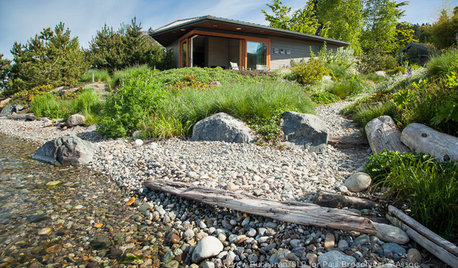Lawn Improvement
anht
18 years ago
Related Stories

GREAT HOME PROJECTSHow to Replace Your Lawn With a Garden
New project for a new year: Lose the turfgrass for energy savings, wildlife friendliness and lower maintenance
Full Story
SHOP HOUZZShop Houzz: Up to 70% Off Garden Improvements
Garden tools, fountains, accents and other picks for the backyard
Full Story
DECORATING GUIDESImproving a Rental: Great Ideas for the Short and Long Haul
Don't settle for bland or blech just because you rent. Make your home feel more like you with these improvements from minor to major
Full Story
BEFORE AND AFTERSSee 6 Yards Transformed by Losing Their Lawns
Wondering whether a turf lawn is the best use of your outdoor space? These homeowners did, and they found creative alternatives
Full Story
LANDSCAPE DESIGNGet Along With Less Lawn — Ideas to Save Water and Effort
Ditch the mower and lower your water bill while creating a feast for the eyes with diverse plantings and gathering places
Full Story
EARTH DAYThe Case for Losing the Traditional Lawn
Work less, help the environment and foster connections by just saying no to typical turf
Full Story
LANDSCAPE DESIGN15 Great Ideas for a Lawn-Free Yard
End the turf war for good with hardscaping, native grasses and ground covers that save water and are easier to maintain
Full Story
LANDSCAPE DESIGNCalifornia Says Goodbye to the Sprawling Ornamental Lawn
New state rules will effectively limit turfgrass to 25 percent of the landscape in most new and renovated yards
Full Story
GARDENING GUIDESHow to Plant a New Lawn From Sod
Take the quick-start route to turf with sod; these installation guidelines will help ensure a healthy and long-lasting lawn
Full Story
INSPIRING GARDENSLawn Gives Way to a More Natural Lakeside Garden
Meadow grasses, beach pebbles and driftwood replace turfgrass in a nature-friendly landscape on Lake Washington’s shore
Full Story





username_5
anhtOriginal Author
Related Professionals
Londonderry Landscape Architects & Landscape Designers · Norfolk Landscape Architects & Landscape Designers · Bridgetown Landscape Architects & Landscape Designers · Zion Landscape Architects & Landscape Designers · Edmond Landscape Contractors · Biloxi Landscape Contractors · North Chicago Landscape Contractors · Red Oak Landscape Contractors · West Coon Rapids Landscape Contractors · Littleton Window Contractors · Holly Hill Window Contractors · Idylwood Window Contractors · Manville Window Contractors · Oviedo Window Contractors · Sherman Oaks Window Contractorsusername_5
morz8 - Washington Coast
username_5
morz8 - Washington Coast
username_5
morz8 - Washington Coast
username_5
anhtOriginal Author
username_5
morz8 - Washington Coast
anhtOriginal Author
username_5
linda_smith_softhome_net
william_moore_redwhitearmy_com
barbara_davis_lycosmail_com
thomas_miller_names_us
chrisdeveloper
lisanti07028
gardengal48 (PNW Z8/9)